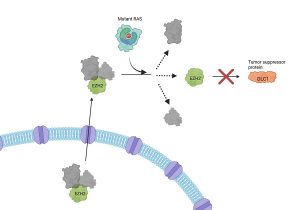Ozempic isn’t approved for weight loss in Australia. So how are people accessing it?

Hundreds of thousands of people worldwide are taking drugs like Ozempic to lose weight. But what do we actually know about them? This month, The Conversation’s experts explore their rise, impact and potential consequences.
To say that Ozempic is a blockbuster drug is an understatement. Manufacturer Novo Nordisk is scrambling to expand production sites to keep up with global demand.
While Ozempic is only approved for the treatment of diabetes in Australia, it is also marketed overseas for weight loss under the brand name Wegovy.
Social media is full of posts and endorsements by celebrities who are using it for weight loss. Faced with limited access in Australia, some people who need the medication for diabetes can’t access it.
Others are turning to the internet to source it from compounding pharmacies – a practice Australia’s regulator, the Therapeutic Goods Administration (TGA), plans to clamp down on.
How doctors are prescribing Ozempic
Use of Ozempic for weight loss in Australia is considered “off label”. This is when a doctor prescribes a medicine for a purpose outside of what is approved.
Ozempic is only approved to be used for the treatment of diabetes in Australia, but its off-label prescribing for weight loss is driving shortages which the TGA thinks will last until 2025.
To manage these shortages, Australian doctors and pharmacies are being asked not to start new patients on Ozempic and to prioritise it for patients with type 2 diabetes who are already stabilised on this medicine.
However, the TGA says it:
does not have the power to regulate the clinical decisions of health professionals and is unable to prevent doctors from using their clinical judgement to prescribe Ozempic for other health conditions.
Why can’t we just make more?
The active ingredient in Ozempic, semaglutide, is a delicate peptide molecule made up of two small chains of amino acids. It’s just one in a family of drugs that are classified as GLP-1 inhibitors.
Because it’s a peptide, its manufacture is complex and requires specialised facilities beyond those used to make normal chemical-based drugs.
myskin/Shutterstock
It is also delivered via an injection, meaning that it has to be manufactured under strict conditions to ensure it is both sterile and temperature controlled.
This means increasing production is not as simple as just deciding to manufacture more. Its manufacturer needs time to build new facilities to increase production.
Compounding pharmacies are making their own
Compounding is the practice of combining, mixing, or altering ingredients of a drug to create a formulation tailored to the needs of an individual patient.
Australian law allows pharmacists to compound only when it is for the treatment of a particular patient to meet their individual clinical need and there is no suitable commercially manufactured product available. An example is making a liquid form of a drug from a tablet for people unable to swallow.
Compounded products are not held to the same safety, quality and efficacy standards required for mass produced medicines. This recognises the one-off nature of such compounded medicines and the professional training of the pharmacists who prepare them.
Recently, pharmacies have been relying on these compounding rules to produce their own Ozempic-like products at scale and ship them to consumers around Australia.
However, there are risks when using these products. The US Food and Drug Administration (FDA) has recently warned consumers of the dangers of using compounded formulations that contain particular salt formulations of semaglutide. It has received more reports of side effects in patients using these products.
How the regulator plans to tighten the loophole
The TGA is taking a number of steps to tighten the compounding loophole and there are ongoing investigations in this area.
In December 2023, the agency issued a public safety warning on the dangers of these compounded medicines.
More recently, it has proposed removing GLP-1 drugs, which includes Ozempic, from Australia’s compounding exemptions. This would effectively ban pharmacies from making off-brand Ozempic. This proposal is currently under consultation and a final decision is expected by June this year.

Artem Oleshko/Shutterstock
If you want to access the drug for weight loss before the shortage is over, be aware that compounded products are not identical to approved Ozempic and have not been evaluated for safety, quality and efficacy.
Supply of copycat versions is also likely to be limited, given the ongoing TGA crackdown.
Read more:
Considering taking a weight-loss drug like Ozempic? Here are some potential risks and benefits
Read the other articles in The Conversation’s Ozempic series here.








